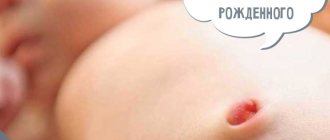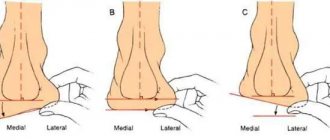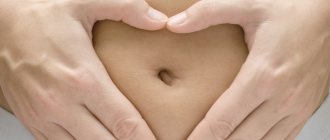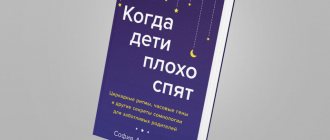March 05, 2019
Averyanova Sveta
A weeping navel in a newborn is a symptom of several diseases. The main one is catarrhal omphalitis. During the initial phase of the inflammatory process, the umbilical wound can become wet for a long time, interfering with healing. The appearance of copious, purulent or bloody discharge signals the development of a serious pathology. Parents should be able to recognize warning signs in order to seek medical advice in a timely manner.
Signs of diseases
Normally, the navel, with or without a clothespin, should completely heal by the end of the baby’s first month of life. During the healing process, scant blood discharge is considered normal and does not require treatment. However, if they do not go away by the age of one month, the child should be shown to a pediatrician.
The main sign of a weeping navel is the constant exudation of serous or serous-hemorrhagic discharge. Drying, the exudate forms crusts. Often after their separation, ulcers appear that can bleed. The general condition of the baby, as a rule, does not suffer.
If fluid constantly oozes from the navel, the skin around it may turn red. Other signs of dermatitis (swelling, tenderness and local hyperthermia) will also appear. When the infection attaches and spreads, the surrounding tissues and the navel itself will begin to fester, an unpleasant odor and general symptoms will appear (the child feels unwell, refuses to feed, increases in body temperature, etc.).
At the bottom of the umbilical fossa there may be granulation growths (fungus). The formation of granulations and catarrhal inflammation are interrelated and often occur together.
The differential diagnosis of omphalitis is carried out with complete and incomplete umbilical fistulas. Depending on the diagnosis, other signs of the disease will be observed.
What can be the complications of a weeping navel?
A long healing process of the navel may indicate the development of pathologies such as:
- Dermatitis. Redness forms around the navel as a reaction to hygiene products and items (antiseptics, wipes, creams). Dermatitis can be triggered by high room temperatures: due to the fact that the child often sweats, the navel may become more wet. Treatment in this case is simple: all you need to do is adjust the air temperature to 18-200C and eliminate previously used hygiene products.
- Omphalitis. Pathology can develop a month after the birth of a baby. With omphalitis, the umbilical wound, as well as the area around it, begins to become wet and rot. The cause of the disease is poor care of the newborn and the use of non-sterile hygiene products.
- Fistula. If there is a defect in the structure of the abdominal muscles of the child, a fistula may appear, which connects the baby’s navel with other organs (for example, the intestines, bladder). If the navel begins to smell bad, and the unpleasant odor is accompanied by an increase in body temperature, an increase in the navel in diameter and the appearance of copious discharge from the wound with heavy crying or defecation, there is a high probability that the baby has a fistula. With its full type, surgical treatment is required. If it is incomplete, there is a chance that by 6 months the fistula will disappear on its own.
- Sepsis (blood poisoning) is a dangerous complication of the condition when the navel continues to get wet, and parents do not want to do anything about this problem for a long period of time. Sepsis can be fatal if you do not seek medical help in time, since the infection that enters the infant’s body quickly penetrates the baby’s blood and spreads through vital systems.
Remember that a newborn baby is very vulnerable to any disease, so you need to treat the navel very responsibly.
Reasons for getting wet
Pediatricians say that if a newborn’s navel gets wet, there are two reasons for this:
- improper care of the umbilical wound;
- bacteria entering it.
In fact, the second point is a consequence of the first. Therefore, it is extremely important to provide the baby with the proper conditions and properly treat the umbilical area. Maintaining hygiene should be of fundamental importance for parents, since problems with the navel can occur in both a two-month-old child and a year old.
In almost 90% of cases, the causative agent of the infection is staphylococcus or its combination with Escherichia coli, Proteus, Pseudomonas aeruginosa and streptococcus. The following conditions contribute to the penetration of bacteria into the umbilical wound:
- improper hygiene of the baby (ingress of water and soap during bathing, untimely changing of diapers and clothes, use of dirty clothes and toys, etc.);
- uncomfortable conditions in the children's room (too high room temperature, at which the baby constantly sweats, infrequent wet cleaning, etc.);
- failure by parents and family members in contact with the newborn to comply with banal rules of personal hygiene (unwashed hands, street clothes, etc.);
- violation of the treatment of the umbilical wound: too often, with the wrong drugs or in the wrong concentrations, tearing off crusts and traumatizing the surrounding skin;
- incorrect or early placement on the tummy (you need to place it on a clean, ironed diaper or sheet);
- failure of the infant's immune system, which is especially important for premature babies.
The navel can become wet for a long time due to poor blood clotting in the child and the structural features of the umbilical ring (too wide and deep). In any case, a wet navel is a reason to immediately show the baby to the doctor. Abundant, purulent and bloody discharge is already a sign of serious diseases:
- phlegmonous form of omphalitis;
Important! With staphylococcal omphalitis, the clinical picture is bright - the skin will turn red and swell. Inflammation caused by gram-negative microorganisms, on the contrary, occurs unnoticed, and often the only symptom is purulent discharge from the fascicle wound.
- incomplete umbilical fistulas (non-closure of the distal parts of the bile or urinary duct);
- complete umbilical fistulas (preservation of the urachus, connection with a loop of intestine).
These conditions require active medical tactics, as they can lead to dangerous consequences.
Why does a baby's belly button start to get wet?
A wet belly button affects its healing time. The ichor appears due to improper care of the wound, non-compliance with hygiene rules, technique and regularity of treatment. So, the navel will not heal well if you treat it with expired medications, unwashed hands and unsterile materials. Under such conditions, germs and infection quickly penetrate the infant's body. And since the baby’s immunity is not strong enough, the infection actively spreads, affecting not only the umbilical area, but also the internal organs.
Among the reasons why the navel begins to get wet, the main ones are:
- non-compliance with hygiene rules: untimely change of diapers, removal of the protective crust from the navel, regular wetting of the wound when bathing or washing;
- infection of the wound due to early placement of the baby on the tummy: the navel may begin to rot and smell bad if staphylococcus or E. coli gets into it;
- weakened immune system;
- when the umbilical cord falls off, a deep wound forms in its place, and it can heal according to the individual characteristics of the baby;
- poor blood clotting process, due to which a crust on the wound forms slowly and ichor is released abundantly;
- overzealous treatment of the navel with antiseptics, which do not allow the wound to dry and lead to burns.
If you find that your baby's navel is moist or damp, immediately consult a pediatrician - a specialist will tell you how to properly care for the umbilical cord and point out your mistakes.
Possible complications
If inflammatory processes and navel fistulas are left untreated, this is fraught with the following complications:
- phlegmon of the anterior abdominal wall;
- peritonitis (inflammation of the peritoneum);
- sepsis (spread of pathogenic flora through the bloodstream throughout the body).
When an infection enters the bloodstream, it can affect any organs and systems. The development of hematogenous osteomyelitis, liver abscess, meningitis, pneumonia and other severe conditions is possible.
The most common complication of a “simple” weeping navel is dermatitis. At the initial stage, it looks like redness of the skin. This disease should not be underestimated, since it is quickly accompanied by an infection with subsequent complications.
Omphalitis in newborns
The presence of microbial associations in the cultures of a pregnant and parturient woman significantly increases the risk of severe intrauterine infections: otitis media , inflammation of the navel in newborns, conjunctivitis , as well as purulent complications. The severity of the newborn's condition and complications of infections depend on the age of the newborn - they are more severe in premature infants. The physiological characteristics of the baby's skin, the presence of an umbilical cord and an umbilical wound - all this predisposes to the appearance of purulent-septic diseases if care is not taken care of. Diseases of the umbilical wound and umbilical cord remnant occupy first place among infectious and inflammatory diseases in infants. Until the umbilical wound is epithelialized, the risk of infection and even entry of the pathogen into the newborn’s blood through the umbilical vessels remains.
The most common form of the disease is catarrhal omphalitis , a condition where the navel of a newborn becomes wet. It usually begins in the second week of life and appears as a long-term non-healing wound with a slight serous discharge. Periodically, the wound becomes crusty. Slight local hyperemia (redness) and mild swelling of the umbilical ring are possible. The infiltration of fiber around the ring is insignificant, and an unpleasant odor may appear from the umbilical cord. Often granulations grow excessively in the wound and a protrusion is formed - navel fungus , resembling a mushroom in shape. The umbilical vessels are not identified. The baby's general condition is not affected and the body temperature is normal.
In the absence of proper care and treatment in weakened children, the process progresses and after a few days pus appears in the umbilical wound (pyorrhea), swelling and hyperemia of the umbilical ring becomes pronounced, and due to swelling of the tissue around the navel, it bulges above the surface of the abdomen. When purulent discharge appears, they speak of purulent omphalitis. The skin around the navel turns red, it becomes hot to the touch and the veins of the anterior abdominal wall may dilate. Red stripes extend from the navel, which indicates associated lymphangitis . The baby's condition worsens: he sucks poorly, becomes lethargic, and the temperature rises. Changes appear in the blood test (the number of leukocytes increases, the ESR increases).
Phlegmonous omphalitis in children occurs when inflammation spreads to surrounding tissues. Phlegmon of the anterior abdominal wall is manifested by severe swelling, widespread skin hyperemia and protrusion of the umbilical region. At the bottom of the wound in the navel, an ulcer may form, covered with fibrinous deposits. When pressing in the navel area, pus is released from the wound. Deterioration of the newborn's condition is noted: lethargy, weak sucking, high temperature, pale skin, regurgitation.
When an anaerobic infection is added, a necrotic form of the disease develops. This complication of the phlegmonous form is very rare in severely weakened and premature children. This form is characterized by the process spreading deeper and developing tissue necrosis. The umbilical cord remains dirty brown, moist and acquires a putrid odor. The skin is purplish-bluish, peels off and a large wound is formed. The process involves the muscles and fascia of the abdominal wall. It is possible that part of the intestine may prolapse through a defect formed by necrotic muscles. This form often leads to peritonitis and sepsis , which in itself is life-threatening for the newborn.
Navel fistula can be complete or incomplete. A complete fistula is formed when the duct between the intestinal loop (vitelline duct) and the navel is not closed or is preserved throughout the entire length of the urinary duct. If the vitelline duct is not closed, the child at birth will notice an abnormally thickened umbilical cord and an enlarged umbilical ring. The umbilical cord remnant does not fall off for a long time, and after it falls off, a fistula opening becomes visible in the center of the navel, from which intestinal contents are separated. The main manifestation of a complete fistula is prolonged weeping of the wound and release of intestinal contents (this does not always happen). If the fistula is wide, when the baby is restless, part of the intestine comes out and is compressed, which is accompanied by intestinal obstruction . If the urinary duct is not closed, an acidic discharge comes out of the umbilical wound. An incomplete umbilical fistula is formed if the fusion of the distal vitelline duct is disrupted. With incomplete fistulas, a picture of catarrhal omphalitis .
Typically, the length of the fistula tract is 2-3 cm. The diagnosis is confirmed by probing the tract: a special probe is inserted to a depth of 1-2 cm. The final examination of the navel in a newborn for fistulas involves performing a fistulography or a test with methylene blue. During fistulography, a radiopaque substance is poured into the fistula through a catheter. The amount of substance administered depends on the type of fistula. A water-soluble substance is injected into narrow passages. The substance is administered under X-ray television control and targeted radiographs are taken. At the end of fistulography, the substance is sucked out with a syringe, the fistula is washed with saline solution and a bandage is applied.
Treatment methods
Treatment for a “wet” navel will be different, depending on the pathology of which it is a symptom.
With the catarrhal form of omphalitis, it is enough to follow hygiene rules and clean the umbilical wound daily with antiseptics. As a rule, the affected area is treated as standard: 3% hydrogen peroxide, then a 2% alcohol solution of brilliant green or a 5% solution of potassium permanganate. A couple of drops are dripped into the wound, waited a little, then very carefully cleaned and cauterized with an antiseptic.
If prescribed by a doctor, you can use powder with bacitracin, neomycin (“Baneocin”) or “Xeroform”. It is also permissible to use furatsilin, Chlorophyllipt, 10–15% propolis solution, 1% broad eucalyptus leaf extract and other similar preparations. Physiotherapy procedures (UHF therapy, ultraviolet irradiation and others) have a good effect. If omphalitis is accompanied by fungus, then the doctor cauterizes it with 5% silver nitrate.
For phlegmonous omphalitis, it is possible to prescribe ointments on a hydrophilic basis (Levomekol, Levosin) or Vishnevsky ointment. Apply lotions and rinses with hypertonic solutions. If necessary, local therapy is supplemented with systemic treatment (antibiotics, vitamins, desensitizing therapy, etc.).
Incomplete umbilical fistulas are managed conservatively, while complete ones require surgical intervention and hospitalization. If the fistula is incomplete, then a thin catheter is inserted into it, and the surgeon in the clinic carries out sanitation with a 3% solution of hydrogen peroxide, and then with a 10% solution of silver nitrate. As a rule, after 4–5 days the walls of the fistula canal stick together.
Symptoms of a weeping navel in children
Redness and swelling of the umbilical cavity
Normally, a small amount of ichor may be released from a still unhealed wound, which is necessary for the regeneration of damaged tissue. Then the wound dries out, and small crusts form in its place, which must be removed regularly. If this recommendation is neglected, a large number of crusts accumulate in the umbilical cavity and a favorable environment for the development of infections is formed. If a large amount of fluid is released from the newborn's navel, accompanying symptoms may develop.
- The skin around the umbilical cavity turns red, and the tissue may have slight swelling.
- The ichor does not dry out for a long time. After treatment with antiseptic and drying medications, the wound remains wet for several hours, the crust does not form at all or it occurs slowly.
- An unpleasant odor emanates from the navel area.
- The discharge becomes abundant, the liquid is opaque, yellowish or greenish shades predominate in it, and bloody inclusions are possible.
At the initial stage of development of the inflammatory process, the child’s behavior does not change, and discomfort appears over time.
If you do not pay attention to the problem in a timely manner, an infection can enter the body through the wound, which can lead to the development of peritonitis or blood poisoning. Treatment often occurs in a hospital setting and rarely requires surgical intervention.
How to properly care for a wound
The risk of infection with a wet navel that does not heal for a long time increases, so you should provide this area with proper care. What to do - the rules are as follows:
- Create conditions for a constant flow of air to the umbilical wound - it should dry. It is necessary that clothes or a diaper do not cover the tummy in the navel area. For these purposes, you can use homemade panties made of breathable natural fabric or special models of diapers with an anatomical notch. You can make the cut yourself or bend the belt.
- Periodically arrange air baths for the baby, completely undressing him for a few minutes, gradually increasing the duration to 5 minutes in winter and 10-15 minutes in summer, 3-4 times a day. In warm weather, you need to go out into the fresh air with your child.
- Treat the umbilical wound in the morning and evening with the products prescribed by the pediatrician. In this case, there is no need to try to peel off the dried crusts and clean out all the purulent contents from the umbilical fossa at once.
- Eliminate the possibility of infection of the child through dirty things, toys and contact with people. Wash things with special baby powder or laundry soap, and then be sure to iron them with a hot iron. Observe the rules of personal hygiene. Carry out wet cleaning, quartzing and ventilation of the room where the baby is located every day.
- Do not place the baby on the tummy until the exudation stops;
- Water procedures should be carried out only using boiled water and with the permission of a doctor.
In most cases, if these recommendations are followed, positive dynamics are noted, and the navel begins to gradually dry out and heal.
Methods of treatment (what to treat)
If the navel becomes wet, the doctor will prescribe additional remedies based on the baby’s condition. In most cases, drying antibacterial drugs are sufficient.
Zelenka
The product has drying properties and prevents the development of infection. It is good to treat with brilliant green for preventive purposes, but if suppuration occurs, it is better to replace it with a 5% manganese solution, or use 70% alcohol. They do not leave marks and allow you to control the appearance of redness and dermatitis.
Chlorophyllipt
Plant-based antimicrobial agent. A 1% alcohol solution kills pathogenic bacteria and prevents their reproduction, relieves inflammation. It is applied to the wound after cleansing the crusts with hydrogen peroxide. The navel must first be dried with a clean cotton swab. Otherwise, the chlorophyllipt solution reacts with hydrogen peroxide, a precipitate is formed, and the bactericidal properties are reduced.
Alcohol solution of furatsilin
Suppresses the development of microbes, promotes healing, and has drying properties. Treatment with an aqueous solution is possible, but it must be combined with other antiseptics.
Baneocin
Baneocin in the form of ointment or powder; the second option is more often used due to its high drying properties. The drug has an antibacterial effect and eliminates inflammation. It is also used after cleansing the wound with hydrogen peroxide.
Xeroform powder (has antiseptic, drying properties).
You cannot prescribe medications yourself, since the degree of the inflammatory process can only be assessed by a doctor. If the infection is severe, children undergo complex treatment, consisting of external treatment of the navel and oral antibiotics. Children are given injections or IVs. In severe cases, blood transfusions, ultraviolet irradiation, and surgery are used.
Recommendations for caring for a weeping navel
- treat 2 times a day with a product prescribed by the pediatrician;
- Before handling, be sure to wash your hands with soap;
- don't press
- Do not touch the wound with dirty hands, do not try to remove pus or poke into the navel with cotton swabs, which can injure the healing tissue;
- Do not apply a bandage or apply a bandage under any circumstances;
- Give your baby air baths 2-3 times a day;
- regularly change the baby’s clothes, wear only spacious clothes made from natural fabrics;
- wash things using special baby powder;
- Iron diapers and clothes on both sides;
- change the diaper regularly;
- during the healing period, use diapers with a special cutout for the navel or make such a cutout yourself;
- do not try to clear all the crusts and purulent discharge at once;
- Only the soggy crusts are removed. When cleaning the wound, you need to carefully remove only the soaked crusts with a cotton swab. If they are not removable, you cannot rip them off: the tissue underneath has not yet formed, removal can lead to bleeding wounds;
- Do not place the baby on the tummy until it is completely healed. Otherwise, the risk of infection and injury to the wound increases, and the baby may feel discomfort.
If the wound does not heal within a month, you should definitely consult a doctor. At the early stage of a weeping navel, the child can be helped with special means and complications can be avoided. In some cases, it is enough to adjust the care of the umbilical wound.
Is it possible to bathe a baby
Bathing a newborn with a wet navel is allowed, but following certain rules. It is very important to use boiled water for bathing, the optimal temperature is 34-37 degrees. You cannot add herbal decoctions, gel, or bathing foam to the water. You can only add a weak solution of potassium permanganate (potassium permanganate). It is recommended to bathe a baby in such water once a week, as potassium permanganate dries out the skin.
Video: Problems with the umbilical wound in a baby
What not to do
If ichor is released during the healing process, parents just need to follow the rules for caring for a weeping wound. If the navel of a newborn is festering, this is a fundamentally different situation that requires active action. In any case, if there is discharge, you cannot:
- cover the wound with a bandage or plaster, as it will fester under them;
- strongly pick, press, crush and take other similar actions during processing;
- self-medicate, violate doctor’s orders, or choose a wait-and-see approach.
Pediatric surgeons emphasize that if there is heavy, constant discharge, you should not use powders, as they will become an obstacle to the outflow of fluid. You also need to prevent water from getting into the umbilical area.
Prevention of a festering navel
To prevent the child from developing omphalitis and other purulent lesions, the umbilical cord stump must be properly treated from the first days of life:
- Avoid crust formation. To do this, use hydrogen peroxide, applying it directly to the wound in the navel area. When carrying out the procedure, use a sterile pipette.
- Clean the wound area regularly. For treatment, use hydrogen peroxide, moistening a cotton swab or swab in it.
- Ensure the wound dries completely. Before applying antiseptics and other medications, you need to allow the skin to dry naturally.
To prevent infection, use a solution of brilliant green. It is applied after the antiseptics have completely dried. The procedure is carried out no more than 2 times a day.
What a parent should remember before treating a wound
In order for the wound on the child’s navel to heal normally and not fester, before treating it, the parent must remember several rules:
- You cannot wear a diaper so that it covers the umbilical area;
- It is important to always wash your hands before touching the umbilical area;
- It is forbidden to remove the installed bracket yourself;
- dried parts of the umbilical cord are removed only by doctors;
- moisturizers and other cosmetics should not be applied to the navel until the doctor allows it.
As soon as signs of infection appear, you should immediately consult a doctor.
When you urgently need to see a doctor
In principle, a “wet” navel is always an indication for contacting a pediatrician. It doesn’t matter what the pathology is called - omphalitis, fistula or phlegmon, an emergency situation can arise at any time. If parents notice the following changes, they should urgently call a doctor:
- the color of the skin around the navel is red or bluish;
- more ichor began to be released than usual;
- the exudate looks different: the color has changed (yellow, dark gray, brown), its consistency (more viscous, mixed with blood), the navel has begun to smell bad or stink of urine or feces;
- severe pain appeared in the navel area;
- swelling of the tissues of the peri-umbilical region has increased;
- there are signs of general malaise and intoxication.
If the wound begins to rot, this is a real threat to the baby’s life. From the abscess, the infection can instantly spread throughout the baby’s entire body.
If, during an uncomplicated course, ichor continues to flow from the umbilical wound after 3 weeks, this is also a reason for an urgent visit to the doctor.
Causes of omphalitis
Inflammation of the navel in adults is associated with one of the following factors:
- the formation of a fistula in the umbilical zone - occurs as a result of injury, surgery on the gastrointestinal or urinary duct;
- prolonged inflammation of the abdominal wall - purulent abscesses appear;
- congenital anomalies - bacteria and dying cells can accumulate in an umbilical canal that is too narrow and deep;
- wounds and mechanical injuries - traces of punctures, including after piercing, disrupt local immunity and contribute to inflammation.
Inflammation can occur due to excess weight, and can also be a consequence of diabetes mellitus, which changes metabolic processes.
Phlegmon
Phlegmon is one of the forms of phlegmonous omphalitis, which is always accompanied by purulent discharge. Against the background of the inflammatory process, the temperature rises, and severe pain and swelling is observed in the navel area.
Often, phlegmon is accompanied by inflammation of the abdominal wall; in these cases, treatment can no longer be carried out at home - the help of a surgeon is required. If phlegmon is not treated, the infection will quickly penetrate the abdominal cavity, leading to the development of necrosis and blood poisoning.
Cystic fistula
A weeping navel is formed at the beginning of the development of an umbilical fistula, which appears after surgery or as a result of a violation of the integrity of the intestinal, urinary, or bile duct. Fistula can also be caused by long-term inflammatory processes.
Other causes of a wet ring
In rare cases, the formation of discharge from the navel is associated with the following diseases:
- Thrombophlebitis of the umbilical vein. Diagnosed in both newborns and adults. It is discovered after resuscitation procedures and catheterization of the umbilical vessels.
- Consequence of umbilical hernia. If the contents coming out of the umbilical ring are strangulated, this can lead to discharge and the development of inflammation.
- Urachal cyst. Congenital pathology associated with a violation of the urinary duct. It can be detected both after birth and after 20-30 years of life.
In women, endometriosis of the uterus sometimes spreads so widely that it reaches the umbilical tissue. Growing into the abdominal wall, the endometrium extends to the navel, as a result of which it begins to fester and become inflamed.
There are many reasons for a weeping navel in adults, so it is impossible to independently diagnose the factors for the development of inflammation. To obtain an accurate diagnosis, you must consult a surgeon. The doctor will order tests, including a biochemical blood test, and give directions for an ultrasound and x-ray. Instrumental diagnostics are needed to exclude inflammatory processes in the deep layers of the abdominal wall.
Alarming symptoms
In most cases, the healing process of the umbilical wound is favorable. However, there are a number of symptoms that may indicate the development of an inflammatory process (purulent omphalitis):
- Redness of the skin with swelling;
- Serous or purulent discharge from the remnants of the umbilical cord;
- Restless reaction of the child when pressing the navel;
- Formation of a mushroom-shaped protrusion;
- Local (in the wound area) or general increase in body temperature;
- Lethargy of the child, increased drowsiness;
- Decreased appetite, regurgitation of milk, repeated vomiting.
With a reduced immune response, the inflammatory process can quickly spread, turning into phlegmon or gangrene of the anterior abdominal wall. That is why, without wasting time, parents and their children need to seek qualified medical help.
What to do if there is discharge from the navel
Most newborns experience a small, clear, light yellow discharge without an unpleasant odor. Doctors usually warn the mother about them upon discharge from the maternity hospital. These secretions do not pose any danger and are a protective reaction of the body, which contributes to faster healing of the umbilical wound. If your navel gets wet, you can simply remove excess fluid with a cotton swab. Additionally, the navel area is gently wiped with a solution of hydrogen peroxide.
A slightly less common situation is that the navel bleeds. This usually occurs after feeding the baby or during bowel movements, when intra-abdominal pressure increases. There is no danger for a newborn with minor blood loss. The risk of infection is also low.
How to properly treat the navel with omphalitis
At the slightest suspicion of a problem with the navel, an urgent consultation with a qualified surgeon is required, since the development of infection in newborns occurs at lightning speed, and it is better to be safe than to miss something. If the doctor finds the situation not dangerous, he will leave the baby for home treatment and give appropriate recommendations.
If inflammation of the navel develops, it is necessary to treat the navel two to three times a day using antiseptics. First, using a cotton swab soaked in a solution of hydrogen peroxide, remove the exfoliated balls of the epidermis, blood crusts and pus, and then apply a drug containing a local antibiotic (bleomycin, furatsilin, polymyxin B). After treatment, a sterile bandage is applied to the wound.
If the child’s condition gives rise to the slightest concern, he will be hospitalized in the neonatal surgery department.
Physiotherapy (microwave, ultraviolet irradiation, helium-neon laser) is also used in inpatient settings. A course of intravenous antibiotics is prescribed (preference is given to third-generation cephalosporins). Its duration is usually five to seven days. With an active purulent process, the possibility of surgical intervention is considered.
The main thing is to keep the umbilical wound clean and provide air access. Disinfectants or antiseptics should only be used when a secondary bacterial infection has occurred.
What to do?
There are many recommendations for caring for your belly button.
There are several medications that may be useful:
- cotton pads and sticks;
- hydrogen peroxide (three percent);
- brilliant green;
- potassium permanganate;
- Chlorophyllipt;
- all kinds of powders. Baneocin is often used.
The last four remedies are effective antiseptics.
Zelenka is especially effective. Pediatricians recommend using potassium permanganate, which allows you to destroy all harmful microorganisms. In more complex cases, doctors advise using various powders.
Even if there are no signs of an inflammatory process, it is still recommended to show the child to a pediatrician. The specialist will advise young parents and give them practical advice. There are several general rules regarding the treatment of the umbilical wound. This will help speed up healing.
Expert recommendations:
- Dry crusts cannot be removed without the mandatory use of hydrogen peroxide. It is necessary to take this medicine and apply it to a wound that does not heal for a long time. If the crust has not yet come off, then you should not tear it off. This can cause bleeding and infection;
- Next, it is recommended to carefully remove dry crusts. What hasn't come off shouldn't be torn off. It will go away next time;
- You need to ask a qualified pediatrician how to treat wounds. Usually doctors advise using simple brilliant green. Powders and Fukortsin are used much more often. A remedy such as Baneocin is especially popular among young mothers. It allows you to slightly dry the wounds. Thanks to him, they get wet less. You should not overdo it, as there is an opinion that in large quantities Baneocin can provoke the appearance of navel granuloma.
As for the frequency of treatment, it is recommended to apply medications to the wounds at least twice a day. If possible, you can do this much more often.











